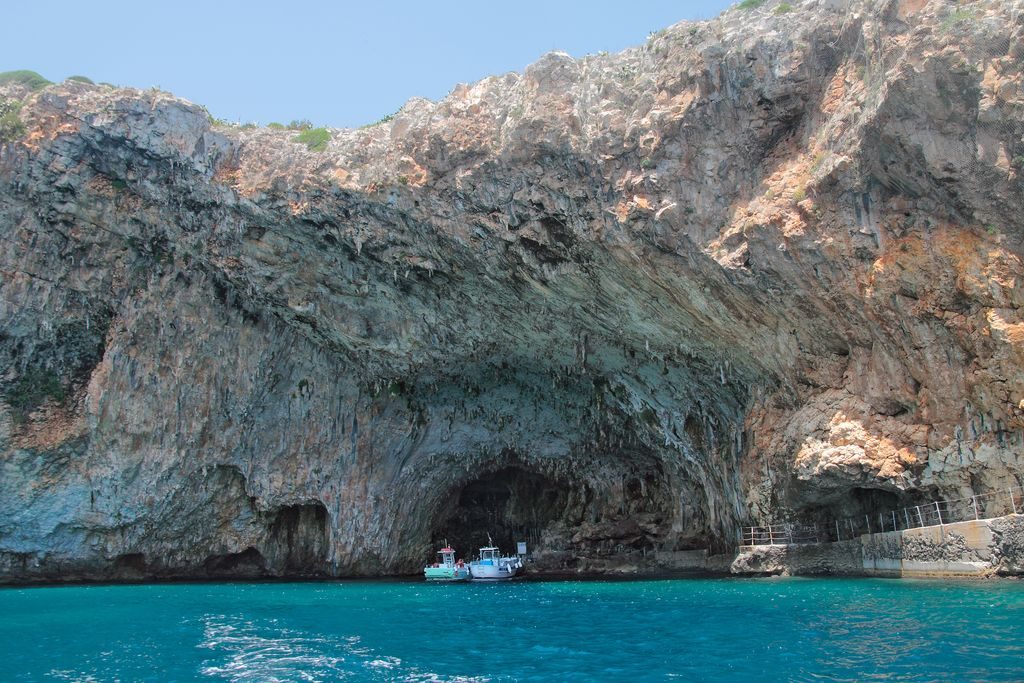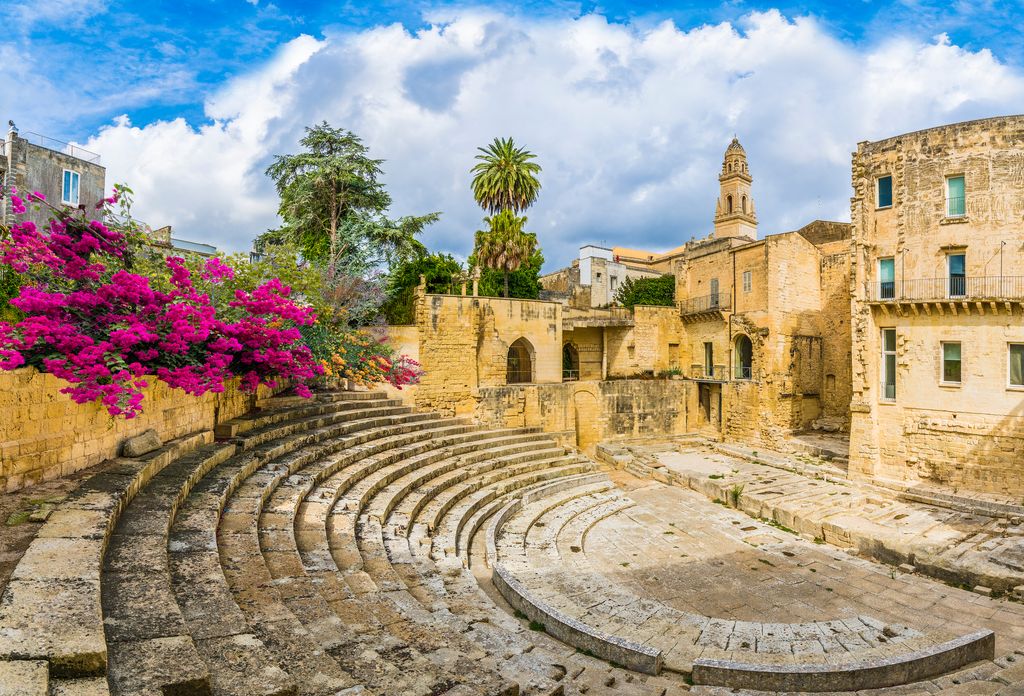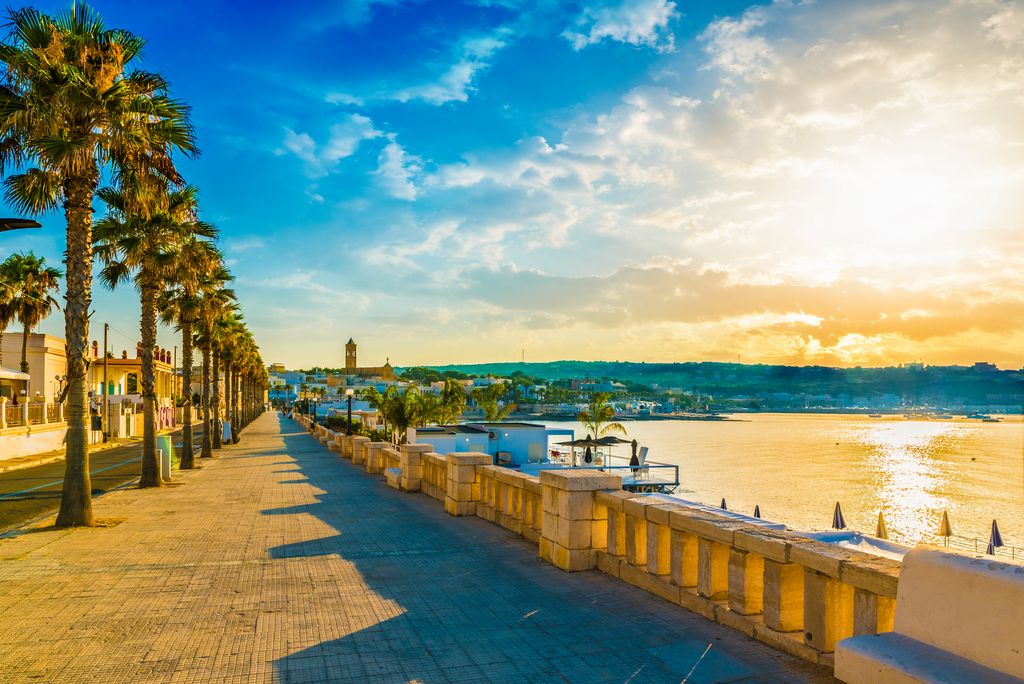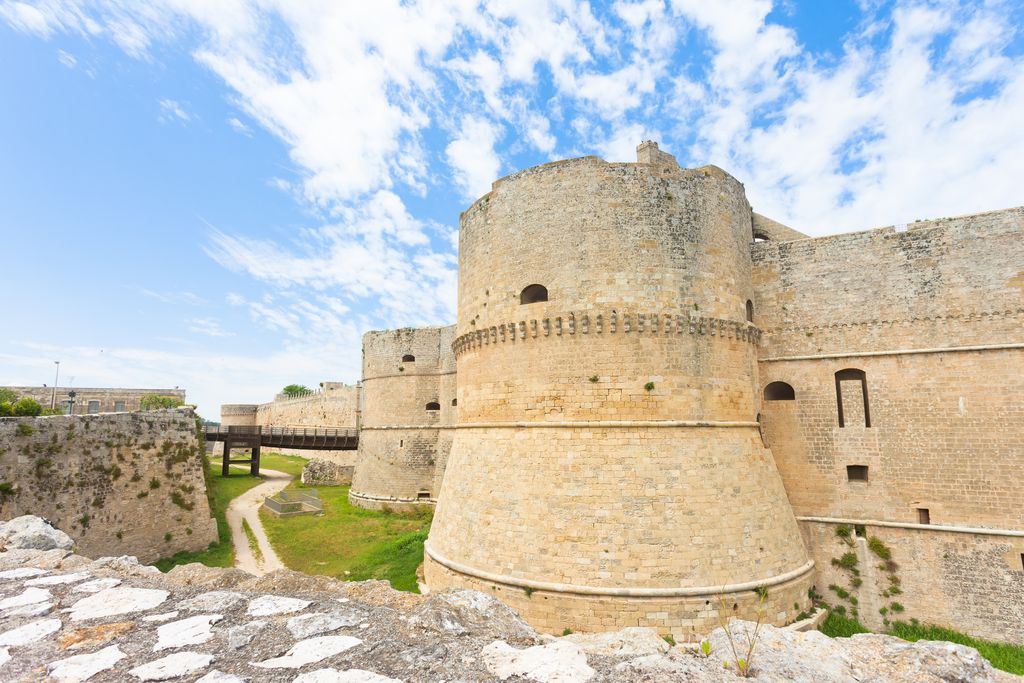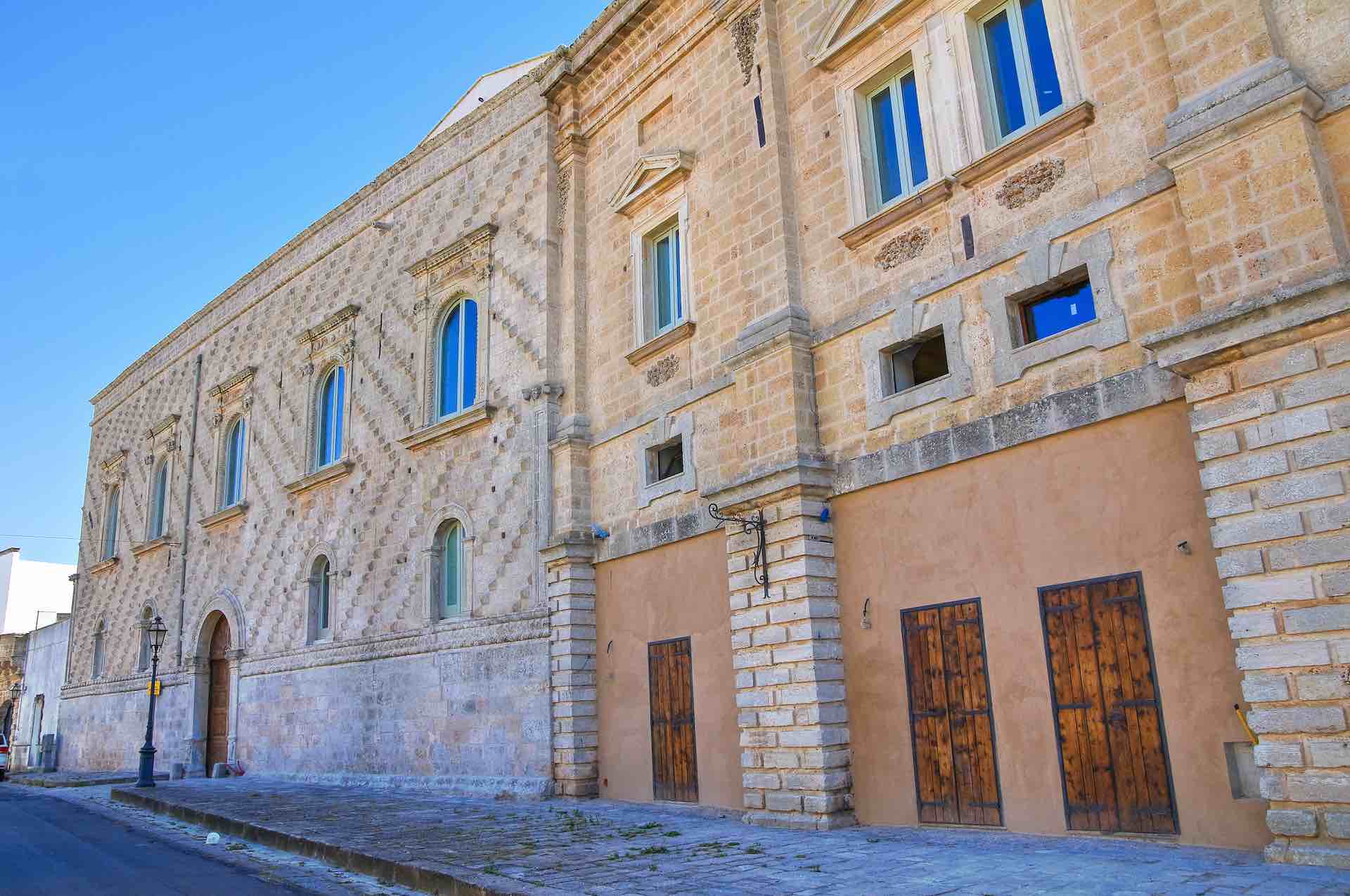A gem set in the Adriatic coastline
Between Santa Maria di Leuca and Otranto there is one of the most fascinating towns in Salento: it is Castro, overlooking that stretch of the Adriatic coastline that welcomed no less than the brave Aeneas, according to the III book of the Aeneid by Virgil.
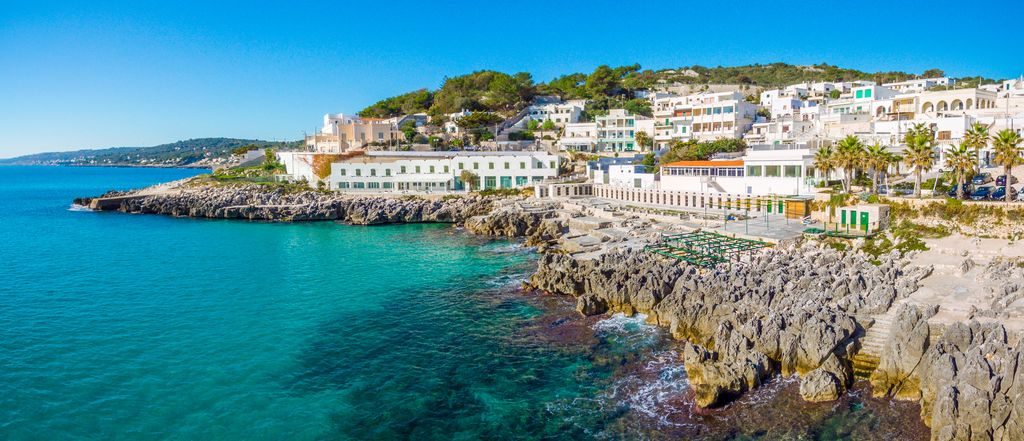
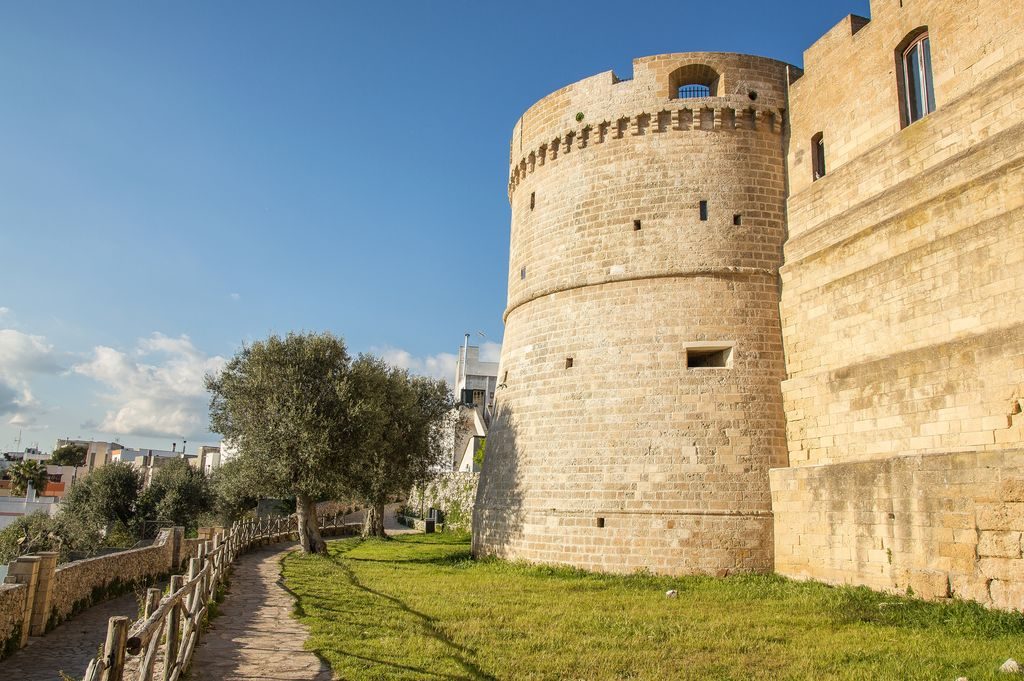
The harbour of Aeneas
Castro Marina is substantially the lower part of the town, characterised by a rocky coastline which hides caves, used as storages by the fishermen in the past: the small harbour is still crawling with fishing boats, that set sail to catch the fish, of which this sea is rich and that is the base of the tasty local cuisine.
The sea is the same crossed by Aeneas, who, with Anchises and Ascanius, landed in the once-called Castrum Minervae; they were attracted by a temple dedicated to Minerva, located on a hill, of which the remains of an altar, a mutilated statue, an arm and a finger have been found.
To discover more about this extraordinary archaeological site, located less than 2 km far from the city centre, you can visit the Civic Museum Antonio Lazzari in the Aragon Castle, that is in the higher part of Castro and dominates the bay below.
The fortress, dating back to the XVI century, was built on the remains of a Byzantine building and four angle towers stand out: in the central courtyard you can distinguish the various rooms: those of Tramontana in the north, that of Ponente overlooking the sea and reachable by a staircase, those of Levante in the impressive Tower of the Knight.
Castro and Zinzulusa
The higher part of Castro is enclosed within city walls that preserve a really picturesque old town, where you can admire the Cathedral of Santa Maria dell’Assunta; the church dates back to 1171 and is built on the ruins of an ancient Greek temple. On the northern side of the building, outside, you can find the remains of a Byzantine chapel and the inscription “Matre Maria”, probably affixed to cast out the paganism connected to the worship of Minerva. The Apulian Romanic façade hides an interior with one nave where papier-mache statues and paintings portraying the saints’ life are preserved.
The beauty of Castro is connected also to its coastline: here there are caves of great beauty and historical interest, such as the Grotta Romanelli, where human and animal remains, typically African and dating back to at least 35000 years ago, have been found, and the Grotta Zinzulusa, this latter reachable by sea or by a rocky path almost at water level; the name of the cave recalls the presence of stalactites and stalagmites inside, that looks like hanging rugs, known as “zinzuli” in the local dialect.
Crossed the entrance, you reach the Cathedral, cavity-shelter of bats surmounted by calcareous columns: walking along the corridor of marvels, among bizarre shaped rocks, you will reach the Cocito, that is the sunken part of the cave where Higginsia Ciccaresei and hypogeum sponges survive.
